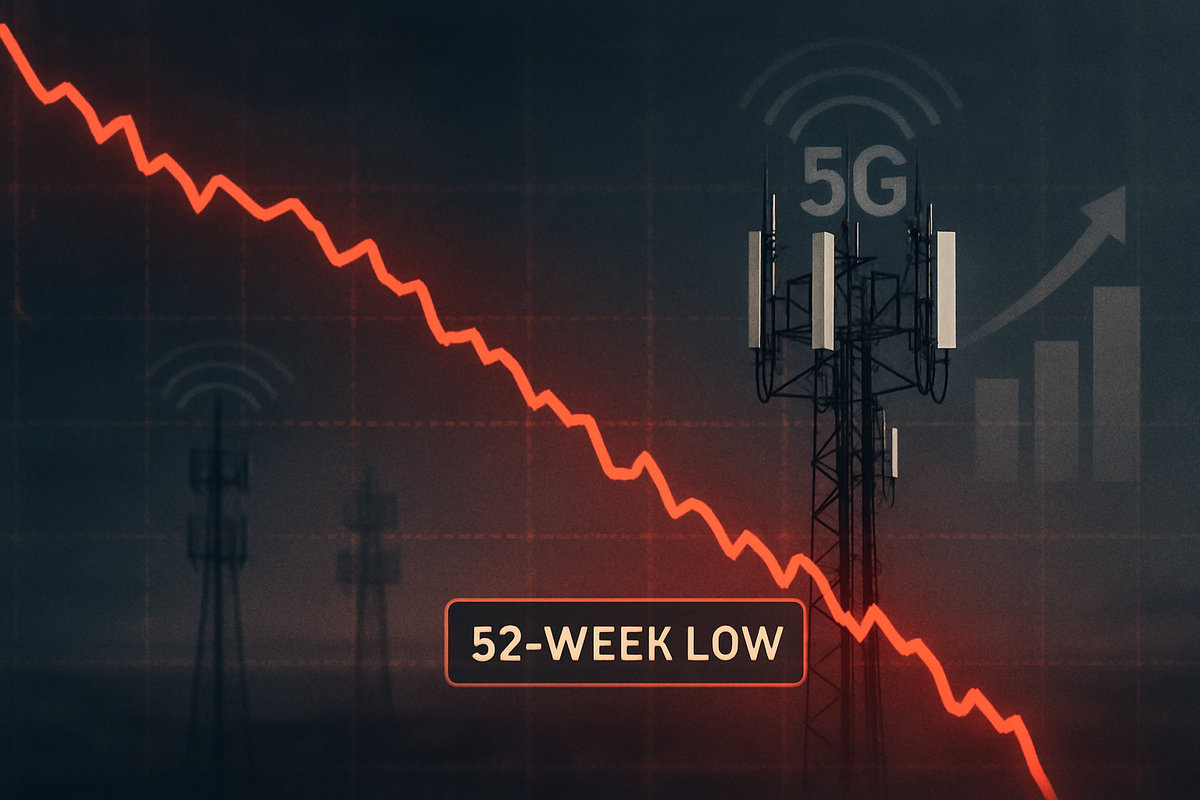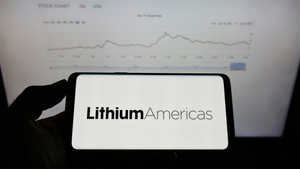
Boston, MA – October 8, 2025 – SBA Communications Corp. (NASDAQ: SBAC), a leading independent owner and operator of wireless communications infrastructure, has seen its stock price hit a new 52-week low, closing at $186.79 USD. This significant downturn reflects a confluence of factors, ranging from company-specific financial performance to broader macroeconomic pressures and evolving dynamics within the telecommunications infrastructure sector. The decline signals investor apprehension regarding the immediate future of the tower industry and the profitability outlook for its key players.
The fall to a 52-week low for SBA Communications (NASDAQ: SBAC) underscores a challenging period for the company and the wider telecom REIT segment. While the company continues its strategic global expansion and network densification efforts, the market's reaction suggests that these long-term plays are being overshadowed by more immediate concerns. Investors are grappling with the implications of slowing wireless carrier spending, persistent high interest rates, and a competitive landscape that demands constant adaptation, all of which are contributing to a re-evaluation of valuation multiples for infrastructure providers.
Detailed Coverage: Unpacking SBA Communications' Recent Decline
SBA Communications' descent to a 52-week low on October 8, 2025, follows a period of mixed financial signals and a challenging operating environment. The stock has experienced a significant erosion of value, declining over 20% in the past year alone. This downturn gained momentum following the company's Q2 2025 earnings report on August 4, 2025. While revenue of $698.98 million slightly exceeded analyst estimates, the reported earnings per share (EPS) of $2.09 narrowly missed forecasts, leading to an immediate 4.9% stock drop.
A primary driver of investor concern is the anticipated decline in Adjusted Funds From Operations (AFFO) for the upcoming Q3 2025, with analysts forecasting a decrease of 8.4% year-over-year to $3.04 per share. The full-year 2025 AFFO is also projected to be down by 9.4% from fiscal 2024. This expected contraction in a key profitability metric for REITs is a significant red flag for the market. Despite strategic moves like the planned construction of 800 new towers in 2025, particularly in Central America, and the previous acquisition of 7,000 towers from Millicom, the capital expenditure and integration risks associated with these expansions appear to be weighing on sentiment in the short term. Conversely, the sale of 169 towers in the Philippines earlier in 2025 indicates a strategic effort to optimize its portfolio, yet this has not been enough to offset the broader negative pressures.
The broader industry backdrop is equally influential. A significant headwind is the "uninspiring" pace of wireless carrier leasing activity. Major carriers are grappling with the monetization of their substantial 5G investments, leading to a slower deployment cycle for new infrastructure compared to previous generations. This slowdown is expected to persist until new revenue streams, possibly from emerging technologies like AI, can be effectively integrated and monetized. Furthermore, as a Real Estate Investment Trust (REIT), SBA Communications (NASDAQ: SBAC) is particularly sensitive to interest rate fluctuations. The current environment of elevated interest rates increases borrowing costs, impacting the profitability of highly leveraged tower companies and making REITs less attractive compared to alternative fixed-income investments.
Analyst sentiment, while maintaining a "Moderate Buy" consensus, has shown signs of increasing caution. Several prominent firms have recently downgraded the stock or reduced their price targets. RBC Capital, Goldman Sachs, Bank of America, and Barclays all revised their price targets downwards in late September and early October 2025, with Bank of America also downgrading its recommendation from "buy" to "neutral." These revisions, even within a generally positive consensus, reflect growing concerns about the near-term outlook. The stock's Relative Strength Index (RSI) also indicates it is in "oversold" territory, a technical signal that while potentially hinting at a future rebound, primarily reflects the intensity of the recent selling pressure.
Companies in the Crosshairs: Winners and Losers from SBAC's Decline
The decline of SBA Communications (NASDAQ: SBAC) to a 52-week low sends ripple effects across the telecommunications infrastructure sector, creating both challenges and potential opportunities for various stakeholders. The most direct impact is, naturally, on SBA Communications itself. The reduced stock price affects its market capitalization, potentially making future capital raises more expensive and impacting its ability to use stock as currency for acquisitions. Employee stock options and investor confidence are also directly hit. The company will face increased pressure to demonstrate clearer paths to AFFO growth and to articulate how its strategic investments in new tower builds and international expansion will translate into tangible returns amidst a slower leasing environment.
Competitors in the tower infrastructure space, such as American Tower (NYSE: AMT) and Crown Castle (NYSE: CCI), are also experiencing similar industry headwinds, though their specific financial situations and geographic concentrations may lead to differing impacts. Generally, a slowdown in carrier spending and higher interest rates affect all major tower REITs. However, if investors perceive SBA Communications' challenges as more pronounced or company-specific, it could lead to a flight to quality towards its larger, more diversified peers, or conversely, pull the entire sector down. Crown Castle's (NYSE: CCI) greater exposure to fiber and small cells in the U.S., for example, might offer some insulation or different growth vectors compared to SBA's (NASDAQ: SBAC) more traditional macro-tower and international focus.
Wireless carriers, the primary customers of tower companies, including AT&T (NYSE: T), Verizon (NYSE: VZ), and T-Mobile (NASDAQ: TMUS), are in a complex position. On one hand, a weaker tower sector might give them more leverage in lease negotiations, potentially leading to more favorable terms for network expansion. On the other hand, the financial health of their infrastructure partners is crucial for their own long-term network build-out and densification strategies. A struggling tower industry could eventually slow down the pace of infrastructure development, which would be detrimental to carriers' ability to meet growing data demands and deploy advanced services like 5G Standalone. Equipment vendors like Ericsson (NASDAQ: ERIC) and Nokia (NYSE: NOK) could also see indirect impacts, as a slowdown in tower builds by REITs could translate to reduced demand for their network equipment.
Wider Significance: Industry Trends and Future Outlook
SBA Communications' (NASDAQ: SBAC) 52-week low is more than just a company-specific event; it's a barometer for broader industry trends impacting the telecommunications infrastructure sector. This decline fits into a narrative of evolving wireless carrier strategies and macroeconomic pressures that are reshaping the landscape for tower REITs. The primary trend is the maturation of 5G deployments. While 5G is still expanding, the initial surge of macro-tower builds and new spectrum deployments is slowing. Carriers are now focusing more on optimizing existing networks, densification through small cells, and monetizing their significant 5G investments, rather than aggressive new site acquisitions. This shift directly impacts the growth rates for tower companies that historically thrived on new site leasing.
The event also highlights the significant impact of sustained higher interest rates on capital-intensive, highly leveraged REITs. Tower companies rely on debt to fund acquisitions and new builds, and elevated borrowing costs directly compress their margins and reduce the attractiveness of their dividend yields compared to risk-free assets. This macro-financial headwind affects the entire REIT sector, but is particularly acute for those with substantial growth capital expenditure requirements. Furthermore, increasing global competition, particularly from countries like China that are aggressively investing in their own telecom infrastructure and technology standards, adds another layer of pressure, potentially influencing global supply chains and technology development.
Historically, tower companies have been seen as resilient, almost utility-like investments due to the essential nature of their infrastructure and long-term, inflation-linked leases. However, the current environment suggests a more nuanced reality. The "build it and they will come" model is being challenged by carriers' efforts to maximize existing assets and a slower pace of new revenue-generating applications for 5G. This situation draws parallels to periods of slower capital expenditure cycles in previous wireless generations, where tower companies had to adapt to different growth drivers, such as co-location and amendments rather than solely new builds. Regulatory or policy implications could also emerge if the slowdown in infrastructure investment becomes a national concern, potentially leading to incentives or streamlined permitting processes to accelerate deployments.
What Comes Next: Navigating the Evolving Telecom Landscape
Looking ahead, SBA Communications (NASDAQ: SBAC) and its peers face a period of strategic adaptation. In the short term, investors will be keenly watching the Q3 2025 earnings report, expected in late October or early November, for any signs of stabilization in AFFO projections or a more optimistic outlook from management regarding carrier spending. The company's ability to effectively integrate its recent acquisitions, particularly the Millicom towers, and demonstrate accretive growth from its international expansion will be crucial. Any indication of renewed carrier activity, perhaps driven by new enterprise 5G applications or significant network densification projects, could provide a much-needed catalyst.
In the long term, SBA Communications (NASDAQ: SBAC) will likely need to continue diversifying its revenue streams beyond traditional macro-tower leasing. This could involve an increased focus on small cells, edge computing infrastructure, or even exploring opportunities in private network deployments for enterprises. Strategic pivots might include optimizing its portfolio further through divestitures of non-core assets, as seen with the Philippines towers, and focusing capital on high-growth regions or technologies. The market opportunities that may emerge include the continued demand for data, which remains robust, and the eventual monetization of advanced 5G capabilities, AI, and IoT, which will require even denser and more resilient network infrastructure.
Potential scenarios and outcomes for SBA Communications (NASDAQ: SBAC) vary. A more optimistic scenario involves carriers accelerating their 5G monetization efforts, leading to a rebound in leasing activity and a subsequent recovery in AFFO growth. In this case, the stock's current low could represent a significant buying opportunity. Conversely, a more pessimistic scenario would see continued sluggish carrier spending, persistent high interest rates, and increased competition, leading to further pressure on margins and potentially a prolonged period of stagnant stock performance. The company's ability to manage its debt, control operating expenses, and execute its international growth strategy effectively will be paramount in determining its trajectory.
Comprehensive Wrap-Up: Assessing the Path Forward
SBA Communications' (NASDAQ: SBAC) descent to a 52-week low is a significant event that encapsulates the current challenges facing the telecommunications infrastructure sector. Key takeaways from this downturn include the immediate impact of mixed financial results and anticipated AFFO declines, the pervasive influence of slowing wireless carrier leasing activity, and the macroeconomic headwind of elevated interest rates impacting highly leveraged REITs. While the long-term demand for data and connectivity remains robust, the path to monetizing this demand through infrastructure investment is proving more complex and protracted than in previous wireless cycles.
Moving forward, the market will be closely assessing the ability of SBA Communications (NASDAQ: SBAC) and its peers to navigate these evolving dynamics. Success will hinge on strategic agility, including optimizing existing assets, prudent capital allocation towards high-growth opportunities, and potentially diversifying service offerings. Investors should watch for any shifts in wireless carrier capital expenditure guidance, signs of re-accelerated leasing activity, and the company's ability to demonstrate accretive growth from its international ventures. Furthermore, the trajectory of interest rates will continue to be a critical factor influencing REIT valuations.
Ultimately, while the current environment presents headwinds, the fundamental need for robust wireless infrastructure persists. The question for SBA Communications (NASDAQ: SBAC) and its investors is not if, but when, and how, the industry will regain its growth momentum. The current low may represent a period of re-calibration for a sector that has historically been a strong performer, prompting a re-evaluation of growth drivers and investment theses for the coming months and years.
This content is intended for informational purposes only and is not financial advice.






